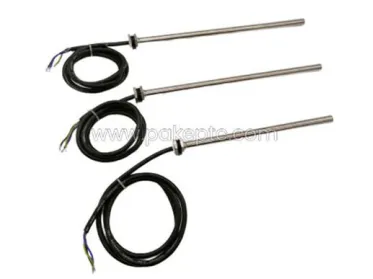Electric Vehicle Heater: The Complete Guide
As electric vehicles (EVs) gain popularity worldwide, advancements in heating technology play a crucial role in enhancing cabin comfort and driving range, particularly in cold climates. Electric vehicle heaters are essential components that provide warmth to occupants and prevent the buildup of condensation on windows, ensuring a safe and comfortable driving experience.
Types of Electric Vehicle Heaters:
Heat Pump:
Heat pumps operate on the principle of thermodynamic heat transfer, extracting heat from the ambient air outside the vehicle and transferring it into the cabin for heating.
In cooling mode, heat pumps reverse the process, expelling heat from the cabin to the outside environment.
Heat pumps are known for their energy efficiency and suitability for moderate climates, where ambient temperatures are conducive to heat transfer.
Positive Temperature Coefficient (PTC) Heater:
PTC heaters consist of resistive heating elements that generate heat when an electrical current passes through them.
PTC heaters are used as supplementary heating systems or in regions with extreme cold temperatures, where heat pump efficiency may be compromised.
PTC heaters offer rapid heating capabilities and are often employed to provide immediate warmth to occupants during cold weather conditions.
Operation Principles:
Electric vehicle heaters utilize electrical energy to generate heat, either through resistive heating elements (PTC heaters) or by transferring ambient heat energy (heat pumps).
Heating systems are controlled by onboard electronics and temperature sensors, which regulate cabin temperature based on user settings and ambient conditions.
See also:
What is the manufacturing process of a resistor?
4 Advice to Choose a all industial resistor manufacturer
What is the advantage of an all-in-one computer?
Glass glaze Fixed Resistor Market Size, Growth and ...
Carbon vs Metal Film Resistors: Differences
Advantages and disadvantages of Schottky barrier diode
Enhancing Rail Transit Efficiency with Infrared Touch MonitorsCabin heating can be activated remotely using smartphone apps or pre-conditioning features, allowing occupants to warm up the interior before entering the vehicle.
Efficiency Considerations:
Heat pumps are generally more energy-efficient than PTC heaters, particularly in moderate climates where ambient temperatures facilitate heat transfer.
PTC heaters consume more electrical energy and may have a greater impact on driving range, especially in cold weather conditions.
Proper insulation, thermal management systems, and energy-efficient heating controls can help optimize the efficiency of electric vehicle heaters and minimize energy consumption.
Maintenance Tips:
Regular Inspection: Periodically inspect the heating system components, including the heater core, blower motor, and cabin air filters, for signs of wear or malfunction.
Filter Replacement: Replace cabin air filters as recommended by the vehicle manufacturer to maintain optimal airflow and heating efficiency.
System Calibration: Ensure that temperature sensors and heating controls are calibrated correctly to maintain accurate cabin temperature settings and energy-efficient operation.
Software Updates: Keep the vehicle's software and firmware up to date to ensure optimal performance and compatibility with heating system features and controls.
Electric vehicle heaters play a crucial role in providing comfort, safety, and convenience to occupants, particularly in cold climates. Whether utilizing heat pumps or PTC heaters, these systems contribute to the overall driving experience and range performance of electric vehicles. By understanding the different types, operation principles, efficiency considerations, and maintenance tips for electric vehicle heaters, drivers can optimize cabin comfort and energy efficiency while enjoying the benefits of electric mobility.
- Previous: None
- Next: What is a lithium battery module?


